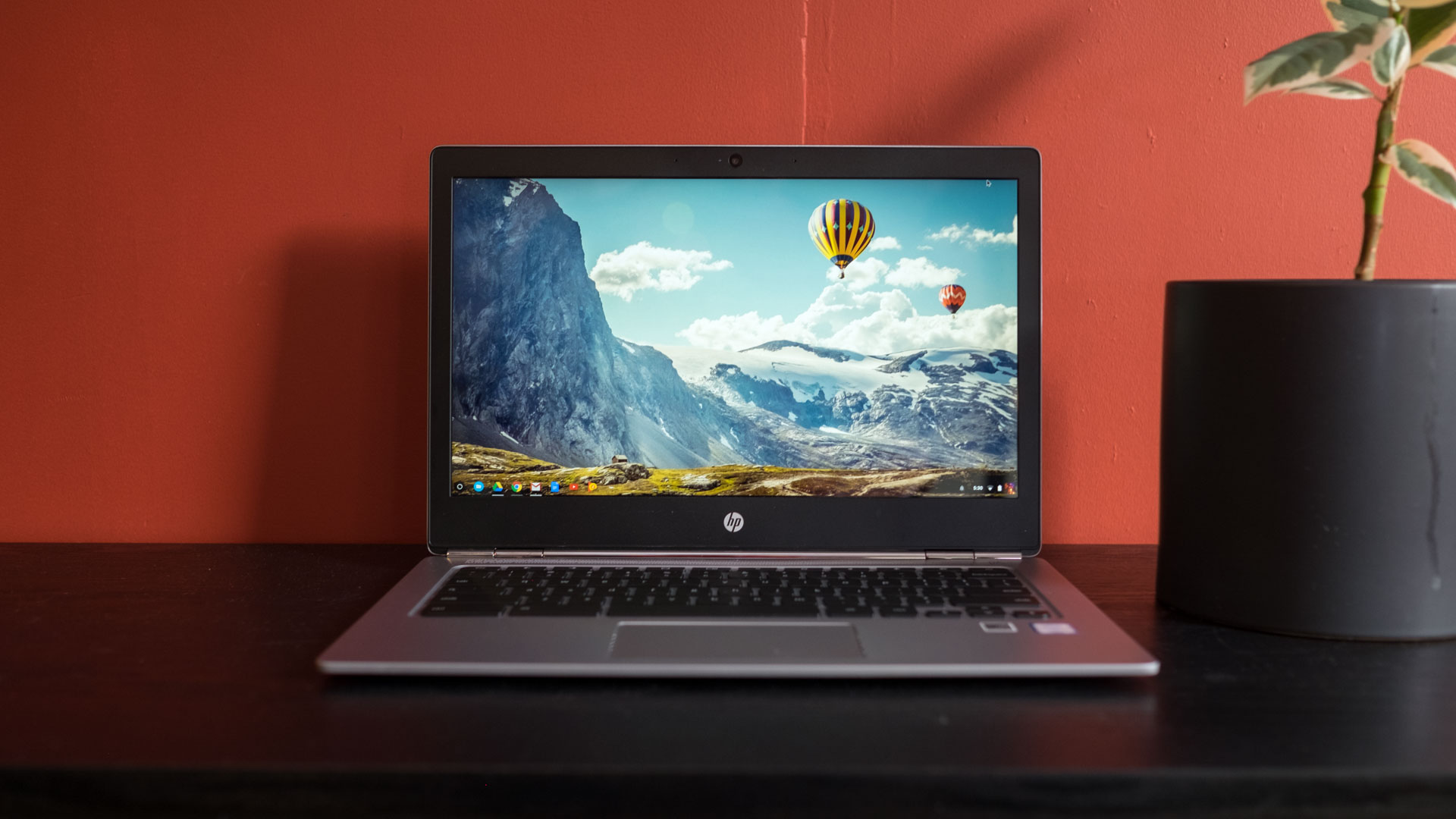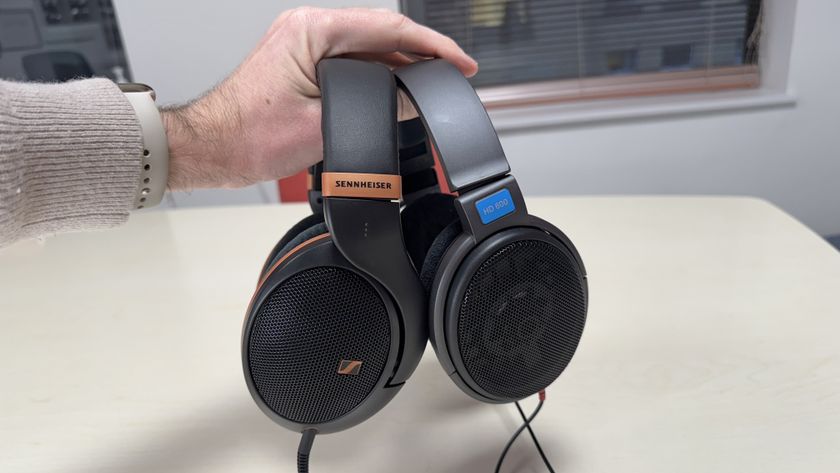TechRadar Verdict
The HP Chromebook 13 is the finest and thinnest Chrome OS machine yet, however the lack of a touchscreen and average battery life prevent it from being the best.
Pros
- +
Ultra-thin and sharp design
- +
Tactile keyboard
- +
High-resolution display is a beauty
Cons
- -
Lacks touchscreen
- -
QHD+ display hikes price and lowers battery life
Why you can trust TechRadar
Chromebooks have come a long way since their budget-priced beginnings. In the last few years, we've seen devices push boundaries for this class of laptop with Full HD displays, faster processors and better build quality. Now, HP is going one step farther to introduce its take on the Chromebook 13, an arguably luxury device.
From top to bottom, this is a high-brow, 13-inch clamshell designed to be the thinnest in its class. What's more, HP is pushing it as the first Chromebook with a high-resolution, QHD+ screen and an Intel Core M processor.
However, with a starting price of $499 or £638 (about AU$670) for a Pentium-powered model, the HP Chromebook 13 is a bit too luxurious for its own good.
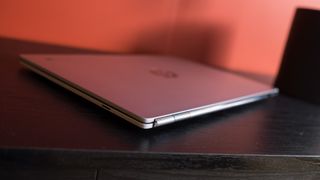
Design
The HP Chromebook 13 pulls off being the thinnest device of its kind yet in style, with a brushed aluminum panels covering the screen lid and keyboard deck. Measuring in at a scant 0.5 inches thick, it's even slicker than the 0.7-inch Samsung Chromebook 3 and 0.6-inch Chromebook Pixel 2.
Beyond measurements, HP has designed a stylish, cloud-powered notebook that pulls from its own and Google's best designs. The austere, silver and gray aesthetic ties back to the Chromebook Pixel.
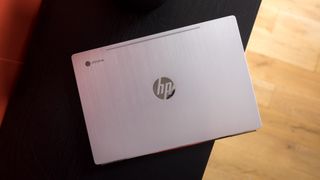
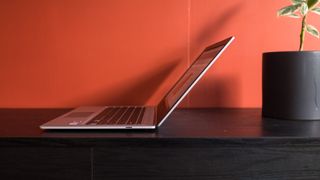
Meanwhile, at the laptop's rear, you'll find a mirrored hinge similar to the HP EliteBook Folio. Though, this time around, the mechanism is limited to only tilting back 135-degrees rather pulling off an 180-degree split.
Of course, that's not to say this 13-inch Chromebook doesn't establish an identity of its own. The slight off-angle front edge and sharp corners affords it a futuristic slant. HP also pays close attention to little details, like making the Chrome logo monochromatic and the HP logo chrome (teehee) to keep in line with the unit's silvered exterior.
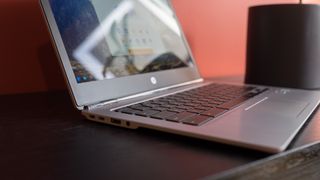
Another neat element is that the lefthand edge droops down – HP calls this its 'chin design' – to accommodate a full-sized USB 3.0 port. We wished HP would have done the same thing on the right side, so it would come with a full-sized SD card reader rather than a slot large enough for only a microSD card.
As if looks weren't enough to captivate us, the HP Chromebook 13 also comes with one of the crispest typing experiences we've had on a laptop. Key travel isn't especially deep, but stiff switches and the thinness of the notebook combine into a satisfying thump when you bottom out the keys – so yes, we love thumping the keyboard.
Likewise, the trackpad feels delightfully tight without making clicking too hard. However, we wish HP would have moved the touchpad over a few millimeters over to the left, so it would line up with the center of the keyboard rather than being planted in the middle.
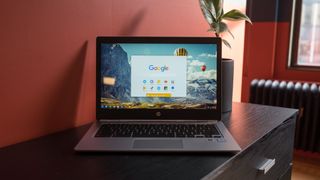
Beyond high-resolution
The HP Chromebook 13 comes with the sharpest screen ever put on a Chromebook, with a stunning resolution of 3,200 x 1,800 pixels. The QHD+ panel easily tops everyone else, including the Acer Chromebook 14 for Work and Chromebook Pixel – both of which come with 2,560 x 1,700 touchscreen displays.
While the 3,200 x 1,800 screen looks fantastic, this signature feature is the only available screen option for the Chromebook 13. We wish there were also a Full HD screen panel. It might not have the same pizzazz as 3,200 x 1,800 pixels, but it would help lower the entry price and prolong battery life as well.
That said, the QHD+ display has some undeniable benefits as it brings out the full beauty of full-resolution images and video while smoothing out text. Vibrant colors and deep contrast are also well represented, and HP has created a display finish that's just glossy enough to accentuate picture quality without reflecting a ton of glare.
Unfortunately, there's no option for a touchscreen, which is becoming all too crucial as Android apps are integrated into Chrome OS.
Kevin Lee was a former computing reporter at TechRadar. Kevin is now the SEO Updates Editor at IGN based in New York. He handles all of the best of tech buying guides while also dipping his hand in the entertainment and games evergreen content. Kevin has over eight years of experience in the tech and games publications with previous bylines at Polygon, PC World, and more. Outside of work, Kevin is major movie buff of cult and bad films. He also regularly plays flight & space sim and racing games. IRL he's a fan of archery, axe throwing, and board games.
Most Popular






